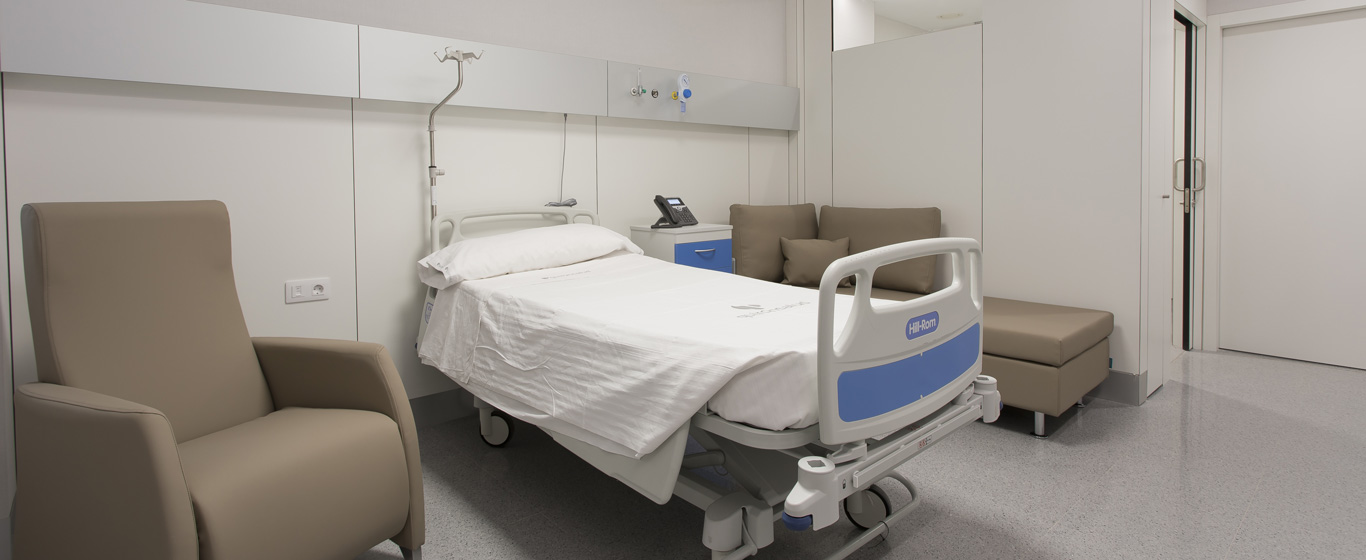Audiometry
Audiometry is a test that evaluates the patient's auditory function, both the ability to perceive sounds of different frequencies and intensities, as well as the intelligibility (the ability to understand, comprehend) of what they hear. It is performed in a soundproof booth, where the patient is exposed to various sound stimuli.

General Description
Audiometry is a diagnostic method used to evaluate auditory function, that is, the patient's hearing ability.
An audiometry consists of two fundamental parts:
- Tonal audiometry: It measures the ability to perceive sounds of different pitches and intensities. Pitch, or frequency, is measured in hertz (Hz) and refers to the number of vibrations per second of a sound, classifying sounds as low, medium, or high. Intensity is measured in decibels (dB) and represents the acoustic power transferred by a sound wave (its amplitude). Tonal audiometry studies the perception of sound both by air conduction and bone conduction.
- Verbal audiometry or logoaudiometry: It evaluates the quality with which sound reaches the brain. This means not just the ability to detect sound, but also to comprehend what is heard (intelligibility).
When is it indicated?
Audiometry is indicated when the patient reports hearing problems, but it is also often part of routine medical exams, especially in occupational health checks for workers exposed to potentially harmful sounds.
Audiometry helps detect hearing loss (hypoacusis) and identify its type:
- Sensorineural or perceptive hypoacusis: There are damages in the auditory nerves or inner ear (the cochlea).
- Conductive hypoacusis: The damage is in the transmission channels of the outer or middle ear (the ear canal, eardrum, or ossicles).
- Mixed hypoacusis: There is damage in both the outer or middle ear and the inner ear.
How is it performed?
Audiometry is conducted with the patient inside a soundproof booth, which is tightly sealed. Each ear is evaluated separately, starting with the one with better hearing.
In air conduction tonal audiometry, the patient must wear headphones through which they will receive pure tones of varying frequencies and increasing intensities, generated by a device called an audiometer. The patient must signal every time they perceive a sound, either by raising their hand or pressing a specific button. The last sound the patient can perceive determines their hearing threshold, which is the minimum decibel level needed to detect sound.
Once this study is finished, bone conduction tonal audiometry is performed. This involves placing a vibrating device, called a bone oscillator, against the mastoid bone (located behind the ear). The sound generated by the audiometer is transformed into a vibration that travels through the bone to stimulate the inner ear and allow auditory perception. Just like in the previous test, the patient must indicate whether they perceive the sound.
In some cases, hearing loss in one ear may be so severe that very high intensity sounds are needed, causing the sound to be perceived simultaneously by the other ear. Since this can lead to confusion and affect the results, a technique called masking is used. This involves emitting a sound of specific frequencies and intensities into the ear not being tested, which cancels out the auditory sensation in that ear and allows for evaluation of the other ear.
The procedure for verbal audiometry is similar to air conduction tonal audiometry, but in this case, the stimuli are words or phrases that the patient must repeat exactly as they hear them. It is also possible to perform verbal audiometry with background noise to see how it affects speech comprehension. This measures the voice detection threshold, word detection, intelligibility, and the maximum intelligibility threshold.
The results of audiometry are represented on a graph called an audiogram, which shows the hearing thresholds relative to the normal hearing threshold and allows for the evaluation of hearing loss:
- Normal hearing ability: The patient can hear sounds at an intensity of 25 dB or less.
- Mild hearing loss: Between 26 and 40 dB.
- Moderate hearing loss: From 41 to 70 dB.
- Severe hearing loss: Sounds are only perceived with an intensity higher than 66 dB. If higher than 85 dB, it is considered profound hearing loss.
Risks
Audiometry poses no risk to the patient and has no contraindications.
What to expect from an audiometry
Before starting the audiometry, the specialist performs a physical examination of the inside of the ear (otoscopy) to check for earwax blockages, perforations, discharge, or any internal inflammation.
The patient then enters the soundproof booth, which has glass walls so the specialist can observe the patient. Before placing the headphones, the patient should remove any hair covering the ears, as well as headbands, scarves, or earrings, to prevent interference with sound perception. Audiometry is not painful or uncomfortable, although for patients with hyperacusis, certain sound stimuli may be bothersome due to their frequency or intensity.
The duration of an audiometry is variable. For an initial evaluation, it usually takes between 5 and 10 minutes. A more detailed evaluation, however, can last up to an hour. After the study, the patient can resume their daily activities normally.
Specialties that request audiometry
Audiometry is requested in the specialty of otolaryngology (ENT) and is a common test in general health exams performed by general practitioners and/or family doctors.
How to prepare
No special preparation is required for an audiometry.







































































































